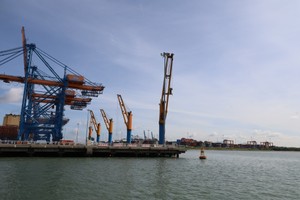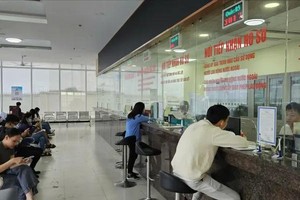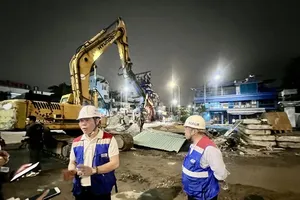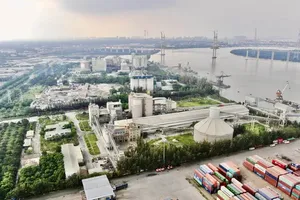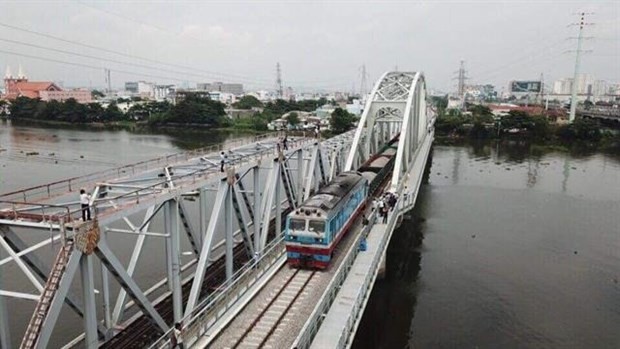
Construction of the new Binh Loi Bridge began in May 2016 with total investment of VND1.3 trillion (US$56.1 million). The bridge has a length of 1.3km, allowing trains to run at a speed of 100km per hour on the track on the bridge.
The new bridge has a vertical clearance of seven metres, while the old bridge only had 1.5 metres of vertical clearance.
Due to the low vertical clearance, only small vessels could go under the old bridge. With the much higher vertical clearance, large vessels weighing more than one tonne can now pass under the new bridge.
The new bridge is expected to improve train and waterway transport between HCM City and the neighbouring provinces of Binh Phuoc, Dong Nai and Binh Duong.
Two spans at the end of the old bridge in HCMC's Thu Duc district will be preserved because of their historical and cultural significance, according to the city People's Committee. The rest of the old bridge will be removed so that ships can travel easily.
According to the city Department of Culture and Sports, the old Binh Loi Railway Bridge contributed to the development of the city and the railway industry.
The city’s People's Committee will arrange funding for bridge conservation and direct the city’s Department of Transportation to manage, maintain and operate the preserved bridge.
Binh Loi Railway Bridge was the first bridge to span the Saigon River. The bridge, 276m long with six spans, was built by French contractor Levalllois Perret in 1902. Whenever trains passed over the bridge, vehicles had to stop at both ends of the bridge.
